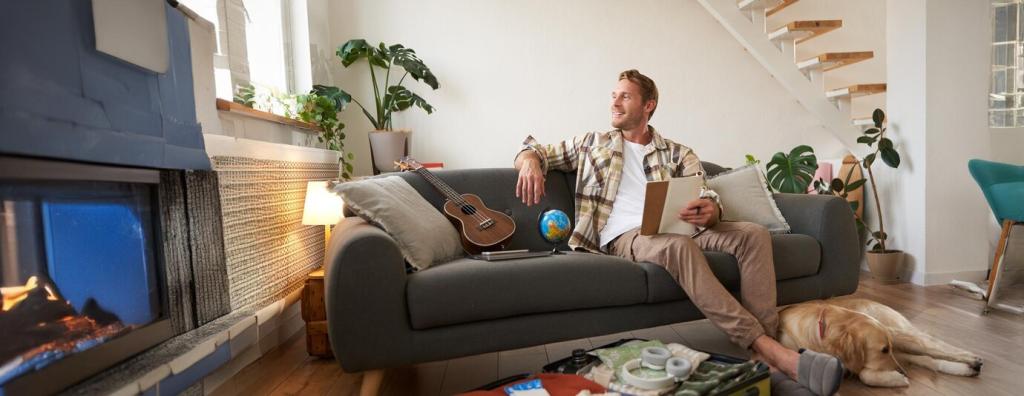Smart Home Automation Trends
The world of smart home automation is evolving rapidly, reshaping the way people interact with their living environments. With technological advancements, homeowners are experiencing unprecedented convenience, comfort, and control over their household systems. This transformation not only enhances daily routines but also opens doors to greater security, energy efficiency, and personalization. The following sections delve deeply into the hottest trends shaping smart home automation today, exploring how innovation, integration, and intelligence are driving the future of modern living.

Today’s voice assistants are more than just an interface for commands—they serve as the control hub for the modern smart home. By leveraging machine learning, these assistants become increasingly adept at understanding natural language, context, and even tone of voice. Over time, adaptive voice assistants can recognize individual household members, remember their preferences, and respond to complex, multi-step requests. This delivers a more conversational, convenient, and truly personalized user experience, making the home feel less like a machine and more like a thoughtful companion.

Enhanced Security and Privacy
Modern smart home security systems feature high-resolution cameras enabled with AI-powered detection. These systems distinguish between people, animals, and vehicles, drastically reducing false alerts and improving incident response accuracy. Homeowners can access live feeds remotely and receive instant, actionable notifications in case of suspicious activity. Some setups even integrate facial recognition, allowing trusted visitors seamless access while alerting users to unknown individuals, blending safety with smart convenience.
Previous
Next
Interoperability and Integration
The rise of industry standards like Matter is a game changer for smart home interoperability. These protocols ensure that devices from different manufacturers can communicate reliably and securely, eliminating the compatibility headaches of the past. Users can now mix and match their favorite brands without worrying about fragmented experiences. The move towards universal protocols fosters healthier competition and drives innovation, ultimately delivering greater choice and value for consumers.

Energy Efficiency and Sustainability
Smart homes now include advanced energy monitoring systems that track power consumption at the device level. With real-time analytics, homeowners can identify wasteful habits, benchmark usage, and receive tailored tips for improvement. Some platforms even automate energy optimization, turning off idle appliances or rescheduling high-demand tasks when grid rates are lowest. This data-driven approach not only saves money but also supports domestic and global sustainability goals by empowering responsible consumption choices.
Health, Wellness, and Accessibility
Indoor air and water quality significantly impact health. Leading home automation systems now continuously monitor factors like humidity, particulate matter, VOCs, and water contamination. When unhealthy levels are detected, automation can trigger actions such as activating air purifiers, adjusting humidifiers, or sending alerts to residents. Maintaining pristine environmental conditions not only supports respiratory health but also helps prevent chronic illnesses and enhance overall well-being, making the home a sanctuary of health.

Whole-Home Audio Integration
Music and sound are no longer confined to a single speaker or room. With whole-home audio integration, homeowners can cast playlists, podcasts, or news to any corner of the house. Smart systems sync sound perfectly across multiple zones or tailor output to individual preferences. Simple voice commands or automated routines adjust volume and playback, adapting to daily life—whether it’s a party, a workout, or a quiet evening in. The result is seamless, high-fidelity listening throughout the home.
Automated Home Theater
Smart automation brings the magic of cinema into your living room. Systems coordinate projectors, screens, speakers, and ambient lighting to create an immersive viewing environment. A single command can dim lights, lower blinds, and launch your favorite streaming service. Personalizable audio profiles and multiuser modes ensure the experience is perfect for every viewer. As media libraries grow and evolve, automated home theaters are redefining how and where families enjoy movies, sports, and games together.
Interactive Augmented Experiences
The integration of augmented reality and spatial computing adds a new dimension to home entertainment. Smart devices now support interactive experiences—such as projecting virtual fitness trainers, immersive educational games, or synchronized light displays for concerts and events. These technologies adapt to space and user input in real-time, making entertainment more dynamic, personalized, and engaging. The fusion of digital and physical reality promises to transform leisure and learning within the connected home.
Remote Monitoring and Management
Modern smart homes provide robust mobile applications that serve as universal remotes for all connected devices. Through these apps, homeowners can control lighting, climate, locks, and appliances, set schedules, and monitor security feeds remotely. The convenience of overseeing the entire home through an intuitive interface adds peace of mind and flexibility to travel or work routines. Frequent updates ensure compatibility with new devices, keeping the remote management experience seamless and future-proof.

